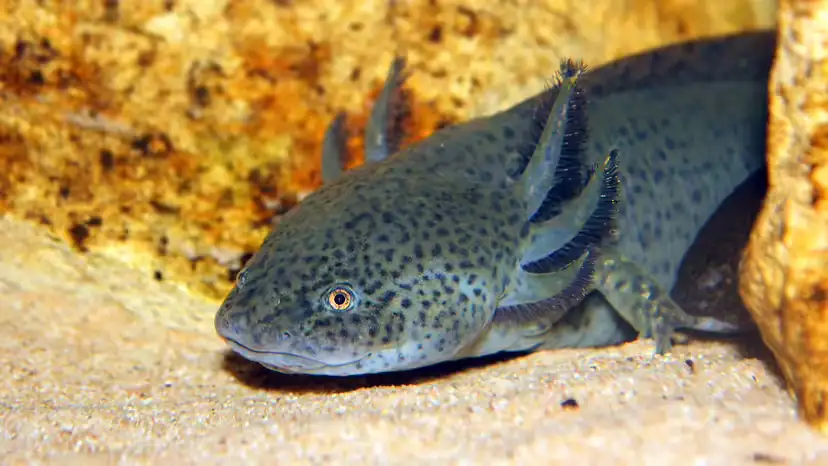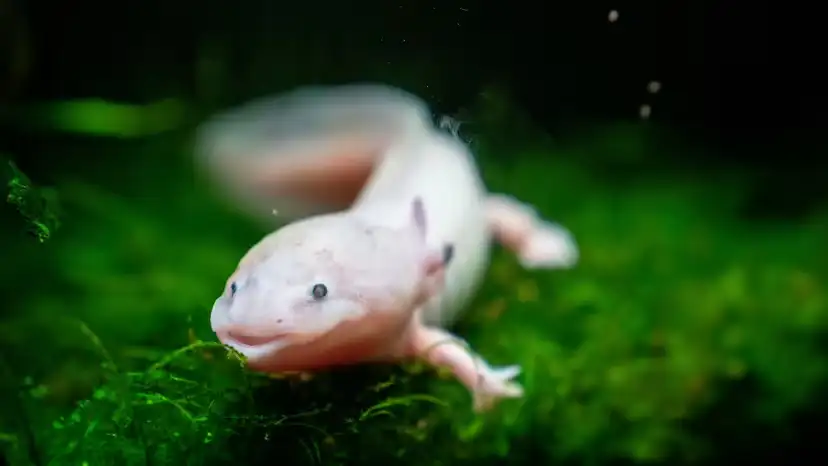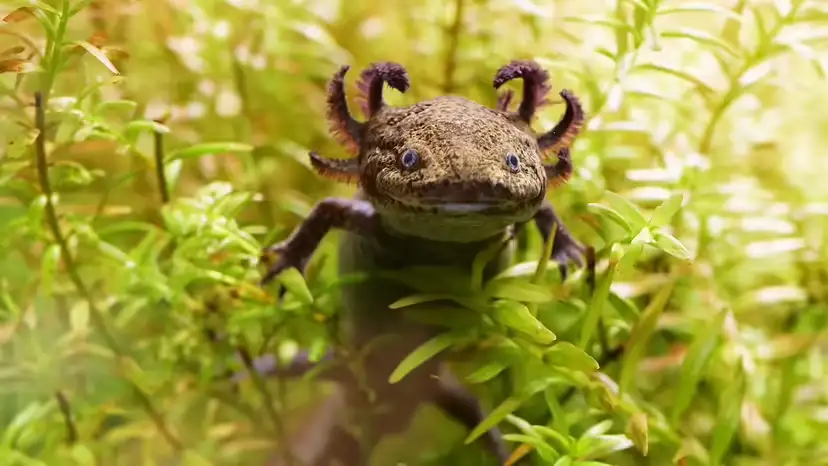The axolotl (Ambystoma mexicanum) is one of the most extraordinary amphibians on Earth—celebrated for its regenerative abilities, unusual biology, and increasingly fragile conservation status.
Understanding how long axolotls live, and why their lifespan differs dramatically between the wild and captivity, helps pet owners, scientists, and conservationists better protect this iconic Mexican species.

A properly cared-for axolotl pet can live two to three times as along as an axolotl in the wild.
In the wild, most axolotls live around 5 years, though many fail to reach adulthood due to habitat disruption, predation, and poor water quality.
In captivity, a well-cared-for axolotl typically reaches 10–15 years, sometimes longer with excellent husbandry and stable water conditions.
This major difference in lifespan is tied to:
their neotenic (permanently juvenile) anatomy
the safety of their environment
access to high-quality food
reduced exposure to parasites, pollution, and predators
Axolotls are neotenic amphibians, meaning they retain larval traits throughout their lives instead of undergoing metamorphosis like frogs or most salamanders. Their key juvenile features include:
external, feathery gills
a flat, wide head
underdeveloped teeth
a long, finned tail
soft, permeable skin
These traits make axolotls exceptionally adapted to aquatic life but also more sensitive to environmental disturbance.
Because axolotls do not transition to a terrestrial form, their water environment dictates their survival. Any shift—temperature spikes, chemical pollution, increased sedimentation—can directly shorten their lifespan.

Axolotls only live longer in captivity if you care for them properly.
Wild axolotls are now confined almost exclusively to the Xochimilco canal system near Mexico City. Historically, they also inhabited Lake Chalco, but that lake was drained in the mid-20th century.
Pollution from Mexico City’s rapid expansion
Invasive fish (carp, tilapia) that eat eggs and compete for food
Habitat loss from agriculture and urbanization
Declining water quality, which damages their protective slime coat
Xochimilco once flourished with aquatic plants, amphibians, invertebrates, and fish. Today, much of that biodiversity has collapsed, leaving axolotls with reduced food and unstable ecosystems.
Wild axolotls are carnivorous and opportunistic predators.
small fish
worms
crustaceans
tadpoles
larvae of various species
Young axolotls must begin hunting tiny prey immediately after hatching, with no parental assistance.
Their main threats include:
Invasive tilapia and carp (egg predators and food competitors)
Large birds such as herons
Water contamination, which weakens their immune system
Even slight damage to their skin or gills can reduce survival rates in polluted environments.

Xochimilco and Lake Chalco were the axolotl's natural habitat — until Lake Chalco was drained.
Captive axolotls generally thrive when provided with clean water, stable temperatures, and a nutritionally rich diet.
commercial axolotl pellets
frozen bloodworms
brine shrimp
earthworms
protein-rich aquatic foods
To mimic their natural habitat, a proper axolotl aquarium should include:
cool water (16–18°C / 60–65°F)
low or gentle water flow
oxygen-rich conditions
hiding spots like plants, caves, or PVC structures
fine sand or bare-bottom flooring (never gravel, which can cause fatal impaction)
While axolotls do not require parental care, they do rely heavily on environmental stability to reach sexual maturity and maintain good health.
Axolotls are renowned for their remarkable regenerative abilities, capable of regrowing:
limbs
spinal cord
parts of the heart
portions of the brain
muscle and cartilage
Their biology offers insights into:
regenerative medicine
scarless wound healing
developmental biology
thyroid and endocrine function
Because axolotls do not undergo typical amphibian metamorphosis, researchers can study larval-stage physiology throughout their lifespan.
Axolotls are classified as Critically Endangered by the IUCN.
Urban expansion has fragmented their natural habitat, drastically reducing wild populations.
restoring Xochimilco canals with vegetation
breeding axolotls in captivity for reintroduction
removing invasive species
creating chinampa-style protected waterways
monitoring wild breeding cycles
public education programs in Mexico
Unfortunately, the pet trade sometimes complicates conservation. Poorly informed owners may release captive axolotls into unsuitable waterways, where they either die quickly or disrupt local ecosystems.
The axolotl’s lifespan reflects the delicate balance between its unique biology and the environment it depends on.
While captive axolotls benefit from stable conditions and attentive care—often living more than twice as long as their wild counterparts—wild axolotls face pollution, predators, and shrinking habitats.
Protecting this extraordinary species requires both scientific effort and public awareness. Their survival is not just about lifespan—it's about preserving one of the world’s most fascinating and biologically valuable amphibians.
animal tags: Axolotl
We created this article in conjunction with AI technology, then made sure it was fact-checked and edited by a Animals Top editor.